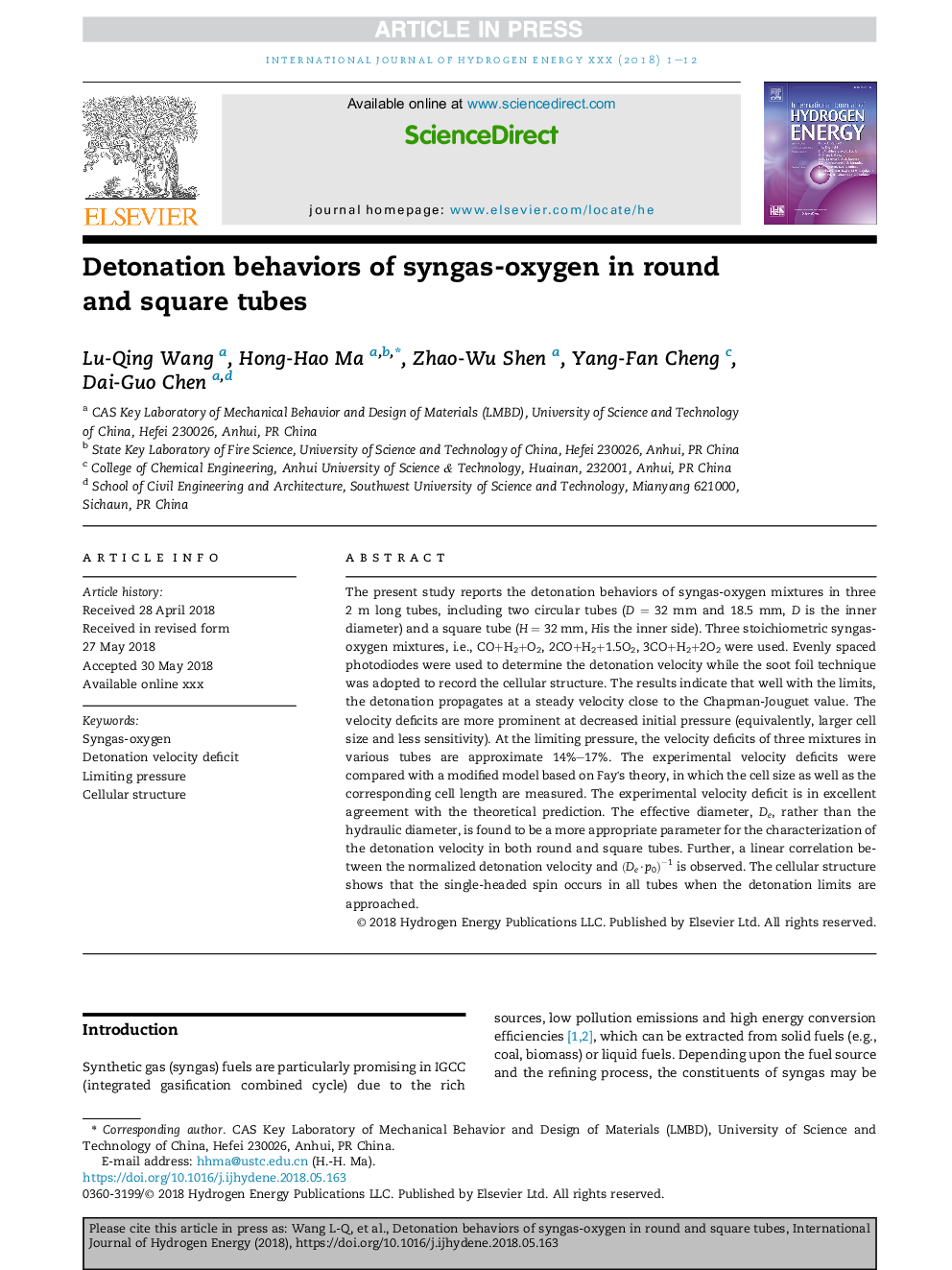| Article ID | Journal | Published Year | Pages | File Type |
|---|---|---|---|---|
| 7705431 | International Journal of Hydrogen Energy | 2018 | 12 Pages |
Abstract
The present study reports the detonation behaviors of syngas-oxygen mixtures in three 2 m long tubes, including two circular tubes (D = 32 mm and 18.5 mm, D is the inner diameter) and a square tube (H = 32 mm, His the inner side). Three stoichiometric syngas-oxygen mixtures, i.e., CO+H2+O2, 2CO+H2+1.5O2, 3CO+H2+2O2 were used. Evenly spaced photodiodes were used to determine the detonation velocity while the soot foil technique was adopted to record the cellular structure. The results indicate that well with the limits, the detonation propagates at a steady velocity close to the Chapman-Jouguet value. The velocity deficits are more prominent at decreased initial pressure (equivalently, larger cell size and less sensitivity). At the limiting pressure, the velocity deficits of three mixtures in various tubes are approximate 14%-17%. The experimental velocity deficits were compared with a modified model based on Fay's theory, in which the cell size as well as the corresponding cell length are measured. The experimental velocity deficit is in excellent agreement with the theoretical prediction. The effective diameter, De, rather than the hydraulic diameter, is found to be a more appropriate parameter for the characterization of the detonation velocity in both round and square tubes. Further, a linear correlation between the normalized detonation velocity and (De·p0)â1 is observed. The cellular structure shows that the single-headed spin occurs in all tubes when the detonation limits are approached.
Keywords
Related Topics
Physical Sciences and Engineering
Chemistry
Electrochemistry
Authors
Lu-Qing Wang, Hong-Hao Ma, Zhao-Wu Shen, Yang-Fan Cheng, Dai-Guo Chen,
